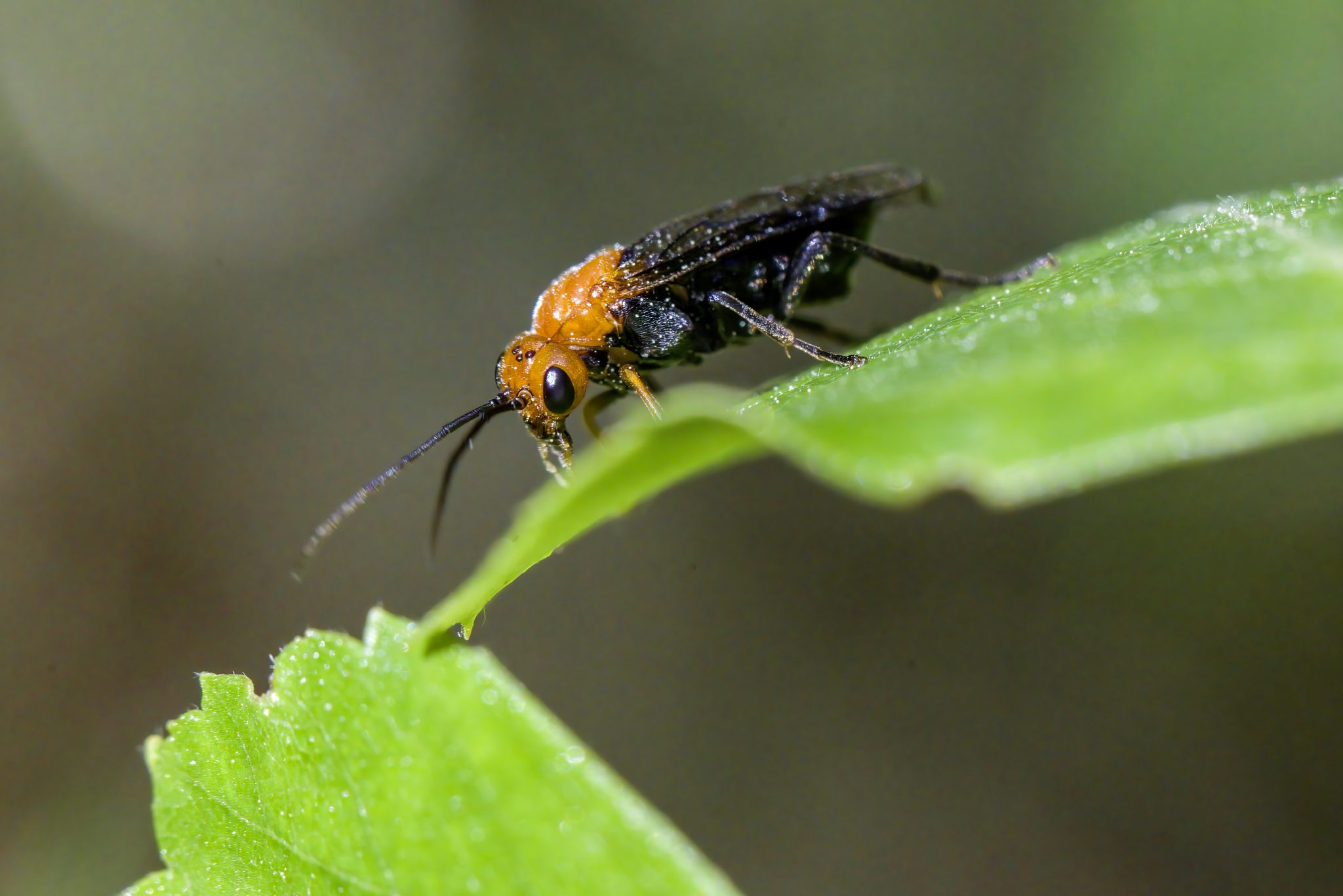🌺 Hibiscus Sawfly (Atomacera decepta)
The Hibiscus Sawfly, Atomacera decepta, is a small but striking insect that belongs to the Tenthredinidae family of sawflies—a group of wasp-like, non-stinging insects. As its name suggests, it is closely associated with hibiscus plants, where its larvae feed on the foliage, sometimes causing significant defoliation.
🔍 Identification
- Size:
Adults measure around 6–8 mm in length. - Coloration:
- Head and thorax: Usually black or dark-colored
- Abdomen: Often features orange, yellow, or reddish tones, especially in females
- Wings: Transparent with a slight smoky tint and visible venation
- Antennae: Long and threadlike
- Larvae:
Resemble small caterpillars but have more prolegs (which distinguishes them from true caterpillars). They are usually greenish or grayish and feed openly on leaves.
🌿 Host Plants & Feeding
- Primary host:
- Hibiscus spp. (especially ornamental varieties)
- Feeding behavior:
- Larvae chew irregular holes in hibiscus leaves or skeletonize them.
- Adult sawflies do not feed on the plant and are mostly active for reproduction.
🐛 Life Cycle
- Eggs:
Laid on the underside of hibiscus leaves using the female’s saw-like ovipositor (from which sawflies get their name). - Larvae:
Emerge and begin feeding; pass through several instars before pupating. - Pupation:
Occurs in the soil or within leaf litter. - Adults:
Emerge to mate and repeat the cycle, often producing multiple generations per year in warm climates.
🌎 Distribution
- Found primarily in North America, especially in the southern United States, where hibiscus is cultivated both ornamentally and agriculturally.
- May be encountered wherever hibiscus plants are grown outdoors.
⚠️ Impact
- Garden pest: Larvae can cause serious defoliation of hibiscus plants if left unchecked.
- Control: Manual removal of larvae or use of insecticidal soaps and neem oil can help in small gardens. Beneficial predators (like birds or parasitic wasps) also play a role in natural control.
🧠 Interesting Fact
Despite their wasp-like appearance, sawflies do not sting, and the adults are harmless to humans. Their resemblance to wasps likely helps deter predators.
📌 Summary
The Hibiscus Sawfly (Atomacera decepta) may be small, but its larvae can be formidable foes to hibiscus lovers. Recognizable by its vivid coloring and leaf-eating larvae, it’s a reminder of the delicate balance between plants and the insects that depend on them. Regular monitoring of garden hibiscus can help manage this beautiful, but occasionally destructive, species.
Views: 581
Subscribe to the newsletter:
